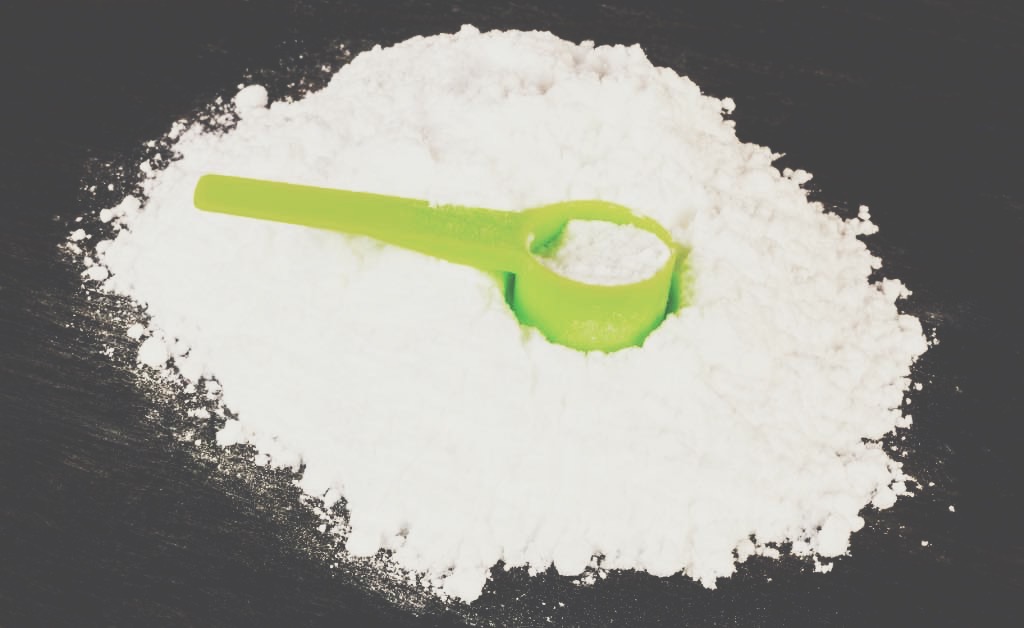If you’re into fitness or athletics, chances are you’ve heard of creatine. As someone who has used creatine for over 10 years as a Division 1 college football player and now as a fitness trainer, I can tell you that it can be a powerful tool in achieving your fitness goals. But with so many different types of creatine available, it can be hard to know which one to choose. In this article, we’ll explore the pros, cons, and average cost of the most common types of creatine, so you can make an informed decision and get the most out of your supplement. Whether you’re a seasoned athlete or just starting out on your fitness journey, you won’t want to miss this!
If you are looking to see how creatine works, I wrote about how creatine works and the science behind it.
Types of creatine
- Creatine Monohydrate
Creatine monohydrate is the most common and widely researched form of creatine. This is what I currently take. It is made up of one molecule of creatine and one molecule of water, and it has been shown to be safe and effective for improving muscle strength and power. Creatine monohydrate is typically taken in doses of 3-5 grams per day, and it can be mixed with water or other beverages. The average cost of creatine monohydrate is around $0.05 to $0.10 per gram.
Pros: Creatine monohydrate is affordable, safe, and effective. It has been extensively researched and has been shown to improve muscle strength, power, and endurance.
Cons: Creatine monohydrate can cause gastrointestinal side effects such as bloating, diarrhea, and cramping in some individuals.
- Creatine Hydrochloride (HCL)
Creatine hydrochloride (commonly known as creatine HCL) is a newer form of creatine that is claimed to be more soluble and absorbed better than creatine monohydrate. Many fitness experts like Jim Stoppani tout this as the best overall option. It is made up of one molecule of creatine and one molecule of hydrochloric acid, and it is typically taken in smaller doses (1-2 grams per day) than creatine monohydrate. The average cost of creatine hydrochloride is around $0.30 to $0.40 per gram.
Pros: Creatine hydrochloride is claimed to be more soluble and absorbed better than creatine monohydrate. It may cause fewer gastrointestinal side effects.
Cons: Creatine hydrochloride is more expensive than creatine monohydrate. There is limited research on its safety and effectiveness compared to creatine monohydrate.
- Creatine Ethyl Ester
Creatine ethyl ester is a form of creatine that is claimed to be more bioavailable and absorbed better than creatine monohydrate. It is made up of one molecule of creatine and one molecule of ethyl ester, which is supposed to enhance its absorption into muscle cells. The average cost of creatine ethyl ester is around $0.80 to $1.00 per gram.
Pros: Creatine ethyl ester is claimed to be more bioavailable and absorbed better than creatine monohydrate. It may cause fewer gastrointestinal side effects.
Cons: There is limited research on the safety and effectiveness of creatine ethyl ester compared to creatine monohydrate. It is also much more expensive than creatine monohydrate.
- Buffered Creatine
Buffered creatine is a form of creatine that is combined with an alkaline powder to increase its pH level. This is supposed to make it more stable and reduce its breakdown into creatinine, which is a waste product of creatine metabolism. Buffered creatine is typically taken in smaller doses (1-2 grams per day) than creatine monohydrate. The average cost of buffered creatine is around $0.60 to $0.80 per gram.
Pros: Buffered creatine may be more stable and less likely to break down into creatinine
Cons: Buffered creatine is more expensive than creatine monohydrate. There is limited research on its safety and effectiveness compared to creatine monohydrate.
- Micronized Creatine
Micronized creatine is a form of creatine monohydrate that has been processed to have smaller particle sizes. This is supposed to increase its solubility and absorption, and reduce the risk of gastrointestinal side effects. Micronized creatine is typically taken in doses of 3-5 grams per day, and it can be mixed with water or other beverages. The average cost of micronized creatine is around $0.10 to $0.20 per gram.
Pros: Micronized creatine may be more soluble and absorbed better than regular creatine monohydrate, and it may cause fewer gastrointestinal side effects.
Cons: Micronized creatine is more expensive than regular creatine monohydrate. There is limited research on its safety and effectiveness compared to regular creatine monohydrate.
Conclusion
As a long-time user of creatine, both as a Division 1 college football player and now as a fitness trainer, I can confidently say that it can be a game-changer in achieving your fitness goals. In this article, we’ve covered the most common types of creatine available, including their pros, cons, and average cost. Creatine monohydrate remains the most widely researched and affordable option. With that said, newer forms like creatine HCL creatine ethyl ester, buffered creatine, and micronized creatine have benefits to offer.
Regardless of which type you choose, be sure to consult with a healthcare professional. There is a lot of research behind creatine. You still need to determine the appropriate type and dosage for your individual needs. Armed with this information, you can make an informed decision and unleash the full potential of creatine in your fitness routine.





